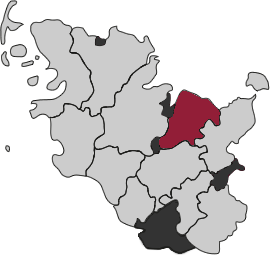| Back to the search | |||||||
|
|
|||||||
|
|
Opening Hours
The castle grounds are freely accessible during the day all year round. |
||||||
|
The open-air museum "Turmhügelburg Lütjenburg" is an authentic reconstruction of a medieval settlement with the wooden castle of a lesser nobleman, as they existed in Schleswig-Holstein from the 12th to the 15th century.
In the course of the Christianisation of East Holstein from the 12th century onwards, German nobles also settled in areas around the Baltic Sea and fortified their residences with tower hill castles - in the process, more than 400 such small castles existed throughout Schleswig-Holstein. In the districts of Plön and Ostholstein alone, earthworks (mounds) of at least 80 tower hill castles can still be seen in the landscape today, which Christian "German" knights built to protect their property at the time of the land seizure/Christianisation. Visitors enter the outer bailey through a mighty entrance gate, visit the granary, the servants' quarters/stable, the smithy, walk past the central well to the knight's manor house, his huge farm building and, at the rear, the Christian Vicelin Chapel. On the adjacent lands are the bakehouses with their mighty clay ovens, and a little way off is the "Zeidlerei" for honey production. Visitors reach the towering refuge castle, the wooden "Turmhügelburg", through a lockable gate and over a massive bridge that leads across the moat. From the tower's gallery on the second floor, guests enjoy a magnificent view over the entire castle grounds with showground and riding arena and the beautiful push moraine landscape. During the season, the extensive grounds are regularly enlivened by medieval groups with numerous tents, medieval stalls and demonstrations; visitors wander through a "living settlement" and can then see how people lived, ate and worked in the castle in the Middle Ages. Medieval music and performance groups on a tented stage also enrich the varied programme, and play areas and campfires are set up for visitors young and old. A bygone era comes alive again. |
|||||||
Name des Museums
Titel des Bildes
Titel des Bildes

